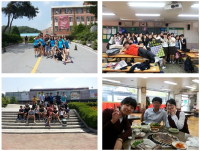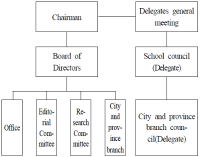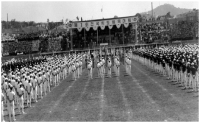PURPOSE Professional Identity Formation (PIF) has become a core concept in various professional education fields as it emphasizes professionals’ dispositions as well as abilities. This study provides an overview of PIF and explores the characteristics of professional education programs that highlight PIF. Through this overview, the purpose of this study is to propose the ‘Professional Identity Matrix for Physical Education Teacher (PIMPET)’, which helps identify PE teachers’ Professional Identity (PI). METHODS This study suggests a guideline to understand PE teachers' PI based on the analysis of the current literature on PI and PIF. RESULTS The characteristics of PIF-based professional education programs were described according to three criteria: teaching content, method, and assessment. On the PIMPET framework, the components of PI formed by PE teachers can be categorized into nine domains which encompass the three identity dimensions (competence, knowledge, and disposition) and the three task areas (teaching, student, and administration). CONCLUSIONS The PIMPET framework allows for a comprehensive understanding of PE teachers’ PI and provides implications for the professionalism of PE teachers and PE teacher education.
PURPOSE The purpose of this study is to analyze various citation patterns such as the scope and intensity of the academic influence of Korean "Kinesiology" studies. METHODS To this end, this paper collected and analyzed 17,693 target articles published in 22 KCI-accredited “Kinesiology” related journals from 2001 to 2014, and 98,941 citing cases that took advantage of target articles as references. Specifically, this paper analyzed the citation pattern by dividing it into two parts. First, this paper analyzed the distribution of citations in individual target articles and the top-cited articles and top-cited researchers. Second, this paper also analyzed the citing articles; such as in which journal, what academic field, and in what pattern the “Kinesiology” target articles were cited. RESULTS As a result, 15% of the target articles were not cited at all for five years after publication, while 6.8% of papers were cited more than 17 times, which was exceptionally more cited compared to the majority of target articles. There were no research topics exclusively exerting influence in Korean "Kinesiology" research, but relatively many cited thesis topics include 'self-management, 'leisure statement', 'psychological well-being', 'self-confidence', 'service quality', and 'leisure flow'. Besides, the Korean "Kinesiology" articles accounted for 76% of the total of about 98,000 citations, having greater influence within the same academic field than other academic fields. CONCLUSIONS This study contributes to the relevant literature in that it is one of the early endeavors to study the citation pattern for the entire Korean kinesiology articles.
PURPOSE This study aimed to explore and analyze research impact of Korean ’Kinesiology’ studies, especially in the aspects of international research impact gauged by the citation counts from Scopus bibliometric database. This study contributes to relevant literature in that it is the first endeavour to evaluate the pattern about how the entire Korean ’Kinesiology’ articles have been cited in international articles. METHODS TTwo types of sample articles were collected in this paper. Firstly, 19,867 target articles published in 23 KCI-accredited Korean ’Kinesiology’ related journals from 2001 to 2015. For the Korean target articles, secondly, international citing articles that took advantage of target articles as references were collected from Elsevier’s Scopus database separately. RESULTS As a result, just 5% of the target articles were cited at least once for five years after publication. The topics of top cited research topics include ‘exercise’, ‘physical activity,’ ‘Alzheimer’s disease, ‘ ’body composition’ and ‘insulin resistance’. Besides, the Korean 'Kinesiology’ articles were the most influential to articles about ‘Medicine,’ ‘Health Professions,’ ‘Multidisciplinary,’ ‘Social Sciences,’ and ‘Nursing’. CONCLUSIONS This study showed that one Korean ’Kinesiology’ article was cited 0.09 times on an average in international Scopus-indexed articles. Considering that the average number of citations in domestic articles is 5.6 times, the international citations of Korean ’Kinesiology’ research still have much room for growth. However, this study confirmed that the scope of the international impact is not limited to a few countries, but is spreading to various countries, and its impact has been growing in recent years.
Purpose The purpose of this study was to explore the concept of physical education redesign. Methods Studies on curriculum redesign, physical education curriculum redesign and the revised 2015 physical education curriculum were collected and analysed. Results First, three different types of curriculum redesign were discussed. Second, there was no clear concept of physical education redesign. Third, both ‘learning content area’ and ‘standard achievement’ were related to the physical education curriculum redesign. Conclusions Two different aspects of physical education curriculum redesign emerged. Establishing the clear concept of physical education curriculum redesign and presenting the concept in the next national physical education curriculum were suggested.

Purpose This study tells about my life about the past time when I studied for the teacher certification examination, using autoethnography. Methods It primarily used personal memories and diaries. The collected data was analyzed by applying longitudinal coding method through technical categories. Results The finding of this study is described in a chronological order as follows. The first part is about my unstable ego formed in my puberty period just like riding a roller coaster. It mainly features the process of choosing a career path when I was in school and the important starting point that made me today. The second part describes about my life after entering the department of physical education. I joined the military only to flee from a fruitless college life where I was wearing an unbefitting mask to hide myself from the world that is completely beyond my control. In the military, I was lucky to realize how to apply my major to set up my career path by coincidence. The third part is about the process of finding a genuine meaning of being a physical education teacher through a transitional period experienced after returning to school and form a stable self. Lastly, passing teacher certification examination with undaunted struggles boosted my self-esteem and self-efficacy and solidified my self-identity in the end. In addition, it is possible to get a glimpse of the attitudes that teachers need to have for a teaching career in the last part. Conclusions What I want to say throughout my descriptive story is that preparing for the teacher certification examination itself is a great challenge as well as a courageous decision for the candidates, but it is an attainable goal if they try with all their heart.


Purpose The purpose of the study is to analyze China's school sports policy by dividing it into the era of four leaders before the current regime. Methods Former Chinese leader Deng Xiaoping's reform and opening up is a big axis that distinguishes China's time, more than 70 years after its founding. Therefore, we discussed the history of Chinese school sports policy by considering the background of the times, the ideology of the former Chinese leaders, and the keynote of the sports policy that influenced the school sports policy. Results The Chinese school sports policy history before and after China's reform and opening up is summarized as having a continuity to “sports as an education for all” and a distinction symbolized by “legislation and scientificization.” Conclusion Deng Xiaoping's reform and opening up has been carried on by the regimes since then, and his guiding ideology and sports policy keynote have had a profound impact on Chinese school sports policy.

Purpose This study is to examine the historical facts about the integration of the Korean Sports Association, the Korean Olympic Committee, and the Korean School Sports Association in 1968. Methods Primary and secondary data were used to understand the integration process of the three organizations. Result First, immediately after liberation, the Korean Sports Association was reorganized and a number of new sports organizations were founded. Second, in the 1960s, the military regime exerted the government's control, making all social groups essential to register in accordance with the Act on Social Group Registration. Third, the Korea Olympic Committee and the Korean School Sports Association frequently caused friction as they operated overlapping projects with the existing Korean Sports Association. Fourth, in February 1968, the government consolidated three groups that were considered social issues based on the experience of dissolving the Korean Special Sports Association. Fifth, the integration of the three organizations is significant in that it prevented redundant projects and wasted budget, and resolved the discord in the sports world. Conclusion The first integration of the Korean Sports Association in 1968 was a historical event that absorbed the Korean Olympic Committee and the Korean School Sports Association. The integration of the three organizations is viewed as a solution for the systematic operation of the sports administration, but on the one hand, it has become the top-ranking organization in the Korean sports community since this time by well blocking the checks of the Korean Olympic Committee and Korean School Sports Association. It can be understood as maintaining absolute power.




Purpose The purpose of this study was to conduct a typological classification of female college students in sport studies regarding perceived career barriers. Methods Q-methodology was used to identify female college students’ viewpoints on carrier barriers. The Q sample was distilled from 76 statements (64 from literature reviews and 12 in-depth interviews) to 25 statement after conducting literature review, in-depth interviews and surveys with open-ended questions. The P sample for this study was 30 students around Seoul and PQmethod software was used for data analysis. Results Three distinct views were extracted: First type of ‘career opaque’, revealed that students have failed to find their own aptitude and interest. Second type of ‘sexual discrimination-male centered’, implied students’ concerns about discriminating factors in relation to marriage and pregnancy for the job they desire. Third type of ‘Insufficient experience and qualification’, indicates students perceive their lack of experience or qualification required for their career. Conclusions The identification of these three viewpoints could provide insights that can be used to design more segmented and detailed career policies for female college students in sport studies.

In the field of Adapted Physical Activity, there is a dearth of research that has attempted to critically explore ethical issues arising in the field of practice. The reason why ethical considerations are needed in the field of practice is that adapted physical activity instructors can negatively affect other people's lives, such as students with disability, regardless of their intentions. Purpose Therefore, the purpose of this study is to apply ethical theories on ethical issues that may appear in the adapted physical activity practice field and consider their implications. Methods Through ethics theory, researcher attempted to critically examine what is right, wrong, or good or bad in the field of adapted physical activity practice. Results As a result of the research, ethical theories were considered and the contributions and limitations that each theory could offer to adapted physical activity practice were discussed.
Purpose The purpose of this research is to provide implications for the study of the physical education curriculum in Korea and China by comparatively analyzing the revised high school physical education curriculum in the two countries. Methods Using Bereday(1964)’s four steps of comparison model in education, this study focuses on the format and content of the general high school physical education curricula of Korea and China, each curriculum having been revised respectively in 2015 and 2017. Results First, in terms of format, both countries consider PE a necessity and share similarities in regard to course structure, credit allocation and document format. Nevertheless, though both countries are oriented toward competency-centered education, there are some differences with respect to official education curriculum documents, numbers of subjects and hours of study based on the reality and situation of each country. Second, in terms of content, both countries present various teaching methods and evaluation principles for the sake of acquiring core competence. However, the Korean curriculum prefers to advocate learning of the value of physical activity to achieve core competencies, while the Chinese curriculum prefers to focus on acquiring athletic skills and health knowledge for achieving core competencies. Conclusions After comparing physical education curriculum in both countries, two implications could be obtained. One is that the consistency problem in Korea should be solved between the core competency, the teaching and learning methods and evaluation standards. The other is that, in China, integrated value of physical education should be paid more attention and core competency as well as teaching and learning methods should be considered.